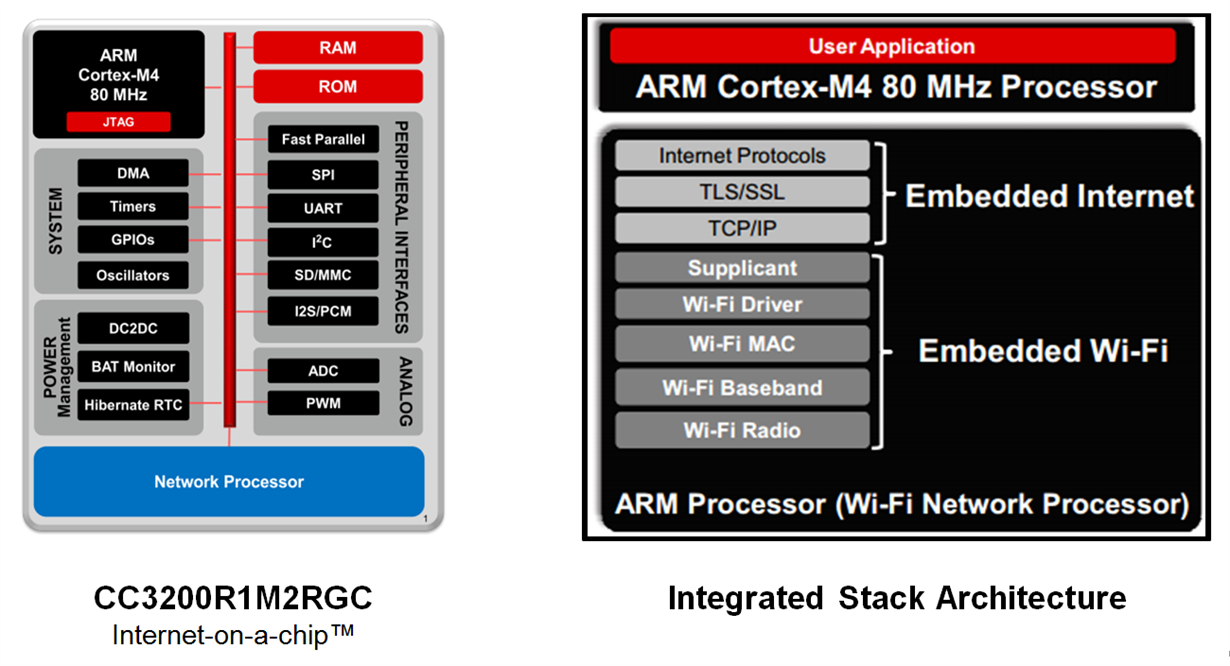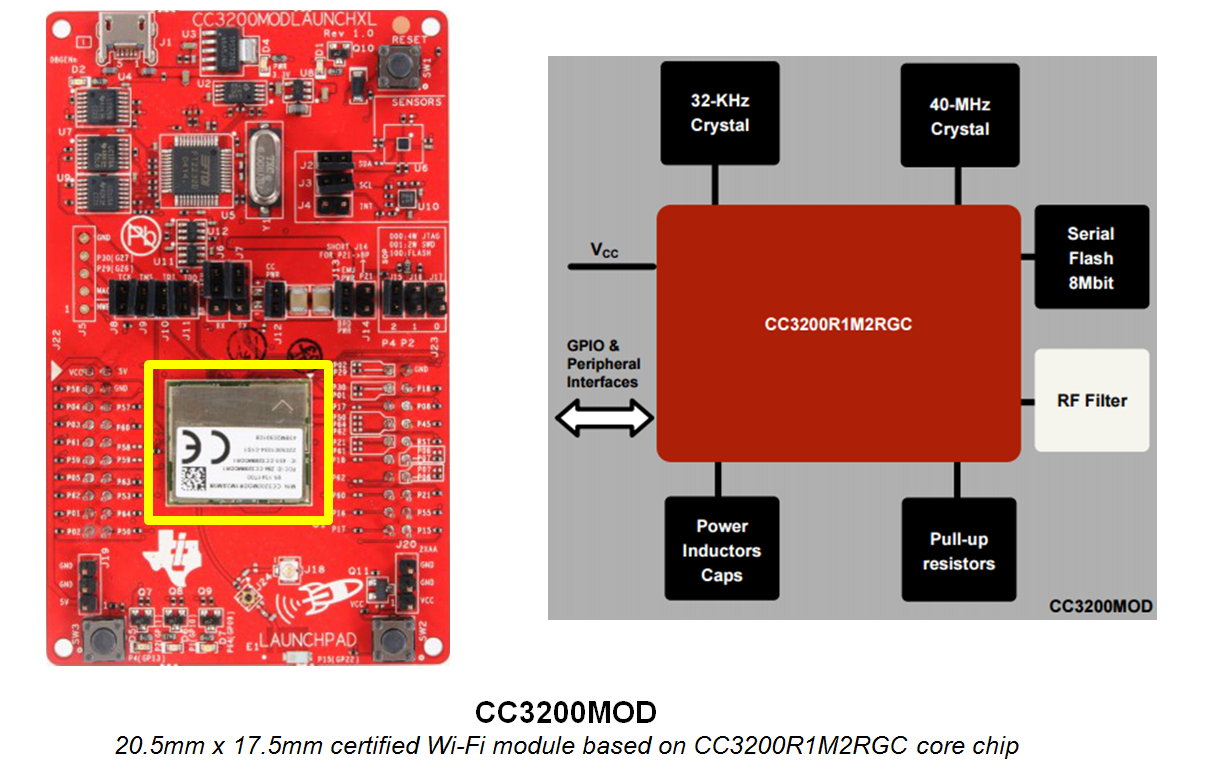-
Part 1: Bringing the Internet to a Single Chip
Part 1: Bringing the Internet to a Single Chip
Eddie Koh
What Challenges Exist for Integrating Wi-Fi® into IoT Applications?
As the Internet of Things (IoT) continues to evolve, many new technologies are redefining how we view wireless networks. Serving as the cornerstone of connectivity in every home and office, Wi-Fi® technology continues to mature; but designing it into IoT applications can still present a few challenges.
Typically operated by a battery, IoT devices require their components to have a small form factor, low cost and low power consumption. Because of these constraints, IoT developers oftentimes look for platforms that have simple software architecture, straightforward RF hardware and easy-to-launch products without high certification, compliance or testing costs. When weighing these needs it’s easy to understand why Wi-Fi is not always the connectivity of choice for most IoT applications.
Because of these constraints, Wi-Fi technology must exhibit the below attributes to be considered for IoT designs:
- Simple software architecture
- Straightforward RF hardware
- Small footprint
- Low power consumption
- Global certification
- Low system cost
How does this benefit the designer?
- Eliminates the need for:
- Expert Wi-Fi software stack engineer
- RF hardware designer
- Antenna designer
- Reduces certification, compliance and testing costs
- Enables pocket sized Wi-Fi experiences
- Delivers more than one year of battery life on two AA batteries
- Reduces cost of Wi-Fi module to under $10
What’s Holding Back the Wi-Fi Design?
Typically, Wi-Fi solutions utilize two chips in a host to transceiver architecture, running split-stack software across both components. The Wi-Fi transceiver operates the lower stack up to the MAC layer, while the upper stack (TCP/IP, security and application protocols) resides on the host processor. This host is usually an ARM® Cortex®-A series microcontroller (MCU), operating between 300MHz – 1GHz clock speed on an operating system such as Linux® or Android™.

This legacy design has been a challenge for many software engineers as they work to resolve stack compatibility, power management and version control issues, which are especially prevalent when the Wi-Fi transceiver and MCU come from different vendors. Software teams should keep in mind that selecting the desired MCU first will significantly limit available options for compatible Wi-Fi transceivers; and failing to find a suitable upper stack forces teams to spend weeks porting the stack onto the selected MCU, followed by months testing and certifications.
The two-chip architecture also poses issues for applications that require low power modes while Wi-Fi is enabled. Although a low speed Wi-Fi stack typically operates at less than 40 MIPS (million instructions per second), the host MCU is forced to remain active instead of sleeping. As a result, the product becomes impractical to operate with battery power.
The Internet-on-a-chip™ Integrated Circuit
Enter, the SimpleLink™ Wi-Fi® CC3200 wireless MCU. Over time, the host to transceiver, split-stack architecture has been restructured into a single integrated design, which now lives on the device’s dedicated network processor. Provided in a library form, this unified stack also enables engineers with less Wi-Fi stack expertise to quickly develop application layer codes and leverage Wi-Fi functions through high level APIs.

Breaking down the structure further, this MCU’s single-chip design includes two on-chip MCUs, a programmable application-dedicated 80MHz ARM Cortex-M4 core with 256KB of RAM, many different peripheral interfaces, a 12-bit analog-to-digital converter and a network processor dedicated to managing Wi-Fi and internet connectivity. This configuration frees up the core to operate an end user’s applications while the network processor independently operates an integrated Wi-Fi stack. Through this architecture, the chip is able to directly interface with a wide range of sensors, actuators and other digital systems.
Using this approach also makes version control much easier, no longer requiring interoperability controls between the upper and lower stacks. For example, operating system (OS) version changes on the host MCU have no effect on the independent version and operation of the device, even though the MCU is part of the same chip.
This single chip solution is offered both as an easy to integrate QFN-package IC, and also as a fully-certified plug-and-play module. The SimpleLink Wi-Fi CC3200MOD module (highlighted in the yellow box below) is the industry’s first programmable FCC, IC, CE, TELEC and Wi-Fi certified module. Out of the box, this component saves on system cost and accelerates time-to-market by eliminating the expensive and lengthy certification processes.
With a CC3200R1M2 at its core, this
20.5mm x 17.5mm module includes all necessary clocks, flash memory and passives to
deliver a complete solution in a single package. 
By significantly reducing power consumption requirements for end applications, the internet-on-a-chip architecture makes Wi-Fi integration an easy choice for countless end equipments. Stay tuned for the next installment where we will detail a few use cases for incorporating this solution into your designs; and check out these links to learn more about the SimpleLink Wi-Fi family and Low-power Internet connectivity over Wi-Fi®.
IMPORTANT NOTICE AND DISCLAIMER
TI PROVIDES TECHNICAL AND RELIABILITY DATA (INCLUDING DATASHEETS), DESIGN RESOURCES (INCLUDING REFERENCE DESIGNS), APPLICATION OR OTHER DESIGN ADVICE, WEB TOOLS, SAFETY INFORMATION, AND OTHER RESOURCES “AS IS” AND WITH ALL FAULTS, AND DISCLAIMS ALL WARRANTIES, EXPRESS AND IMPLIED, INCLUDING WITHOUT LIMITATION ANY IMPLIED WARRANTIES OF MERCHANTABILITY, FITNESS FOR A PARTICULAR PURPOSE OR NON-INFRINGEMENT OF THIRD PARTY INTELLECTUAL PROPERTY RIGHTS.
These resources are intended for skilled developers designing with TI products. You are solely responsible for (1) selecting the appropriate TI products for your application, (2) designing, validating and testing your application, and (3) ensuring your application meets applicable standards, and any other safety, security, or other requirements. These resources are subject to change without notice. TI grants you permission to use these resources only for development of an application that uses the TI products described in the resource. Other reproduction and display of these resources is prohibited. No license is granted to any other TI intellectual property right or to any third party intellectual property right. TI disclaims responsibility for, and you will fully indemnify TI and its representatives against, any claims, damages, costs, losses, and liabilities arising out of your use of these resources.
TI’s products are provided subject to TI’s Terms of Sale (www.ti.com/legal/termsofsale.html) or other applicable terms available either on ti.com or provided in conjunction with such TI products. TI’s provision of these resources does not expand or otherwise alter TI’s applicable warranties or warranty disclaimers for TI products.
Mailing Address: Texas Instruments, Post Office Box 655303, Dallas, Texas 75265
Copyright © 2023, Texas Instruments Incorporated